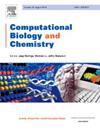应用免疫信息学开发新型有效的多位点嵌合体疫苗,预防黑翅大疣病毒
IF 2.6
4区 生物学
Q2 BIOLOGY
引用次数: 0
摘要
血流感染是由耐药细菌(如最近报道的革兰氏阴性菌 Variovorax durovernensis)引起的重大公共卫生挑战,加重了医疗系统的负担。利用从具有代表性的 V. durovernensis 菌株中提取的嵌合肽设计疫苗,在预防疾病发生方面大有可为。目前的研究旨在采用反向疫苗学(RV)方法,如检索 V. durovernensis 蛋白质组学数据、通过 CD-HIT 去除冗余蛋白、过滤与人类非同源的蛋白和必需蛋白、通过 CELLO 和 PSORTb 鉴定外膜(OM)蛋白。在这些步骤之后,还采用了免疫形式化方法,如通过 IEDB 预测表位,使用连接体和佐剂进行疫苗设计,以及分析抗原性、过敏性、安全性和稳定性。在 4208 个非冗余蛋白中,一个 OmpA 家族蛋白(A0A940EKP4)被确定为开发多位点疫苗构建体的潜在候选蛋白。对 OM 蛋白进行分析后,根据 CTL 代表细胞毒性 T 淋巴细胞和 HTL 代表辅助性 T 淋巴细胞表位的预测,在嵌合构建体的基础上发现了六个免疫优势(B 细胞)表位。为确保全面覆盖全球人群,CTL 和 HTL 的覆盖率分别为 58.18 % 和 46.56 %,总体覆盖率为 77.23 %。通过使用 EAAAK、GPGPG 和 AAY 连接器、霍乱毒素 B 亚基佐剂和适当的表位,嵌合体疫苗被顺利地整合到了一起,有效地激发了适应性免疫和先天性免疫反应。例如,给药抗原在注射后第五天出现计数高峰,然后逐渐下降,直到第十五天。在抗原浓度降低的同时,还观察到几种抗体(IgG + IgM > 700,000;IgM > 600,000;IgG1 + IgG2;IgG1 > 500,000)的水平升高。通过 iMODS 进行的分子动力学模拟显示,残基对之间存在很强的相关性,突出了对接复合物的稳定性。所设计的疫苗在诱导特异性免疫原反应方面具有良好的潜力,从而促进了未来针对杜氏疟原虫疫苗开发的研究。本文章由计算机程序翻译,如有差异,请以英文原文为准。
Application of immunoinformatics to develop a novel and effective multiepitope chimeric vaccine against Variovorax durovernensis
Bloodstream infections pose a significant public health challenge caused by resistant bacteria such as Variovorax durovernensis, a recently reported Gram-negative bacterium, worsening the burden on healthcare systems. The design of a vaccine using chimeric peptides derived from a representative V. durovernensis strain holds significant promise for preventing disease onset. The current study aimed to employ reverse vaccinology (RV) approaches such as the retrieval of V. durovernensis proteomics data, removal of redundant proteins by CD-HIT, filtering of non-homologous proteins to humans and essential proteins, identification of outer membrane (OM) proteins by CELLO and PSORTb. Following these steps immunoinformatic approaches were applied, such as epitope prediction by IEDB, vaccine design using linkers and adjuvant and analysis of antigenicity, allergenicity, safety and stability. Among the 4208 nonredundant proteins, an OmpA family protein (A0A940EKP4) was designated a potential candidate for the development of a multiepitope vaccine construct. Upon analysis of OM protein, six immunodominant (B cell) epitopes were found on the basis of the chimeric construct following the prediction of CTL stands cytotoxic T lymphocyte and HTL stands helper T lymphocyte epitopes. To ensure comprehensive population coverage globally, the CTL and HTL coverage rates were 58.18 % and 46.56 %, respectively, and 77.23 % overall. By utilizing EAAAK, GPGPG, and AAY linkers, Cholera toxin B subunit adjuvants, and appropriate epitopes were smoothly incorporated into a chimeric vaccine effectively triggering both adaptive and innate immune responses. For example, the administered antigen showed a peak in counts on the fifthday post injection and then gradually declined until the fifteenth day. Elevated levels of several antibodies (IgG + IgM > 700,000; IgM > 600,000; IgG1 + IgG2; IgG1 > 500,000) were observed as decreased in the antigen concentration. Molecular dynamics simulations carried out via iMODS revealed strong correlations between residue pairs, highlighting the stability of the docked complex. The designed vaccine has promising potential in eliciting specific immunogenic responses, thereby facilitating future research for vaccine development against V. durovernensis.
求助全文
通过发布文献求助,成功后即可免费获取论文全文。
去求助
来源期刊

Computational Biology and Chemistry
生物-计算机:跨学科应用
CiteScore
6.10
自引率
3.20%
发文量
142
审稿时长
24 days
期刊介绍:
Computational Biology and Chemistry publishes original research papers and review articles in all areas of computational life sciences. High quality research contributions with a major computational component in the areas of nucleic acid and protein sequence research, molecular evolution, molecular genetics (functional genomics and proteomics), theory and practice of either biology-specific or chemical-biology-specific modeling, and structural biology of nucleic acids and proteins are particularly welcome. Exceptionally high quality research work in bioinformatics, systems biology, ecology, computational pharmacology, metabolism, biomedical engineering, epidemiology, and statistical genetics will also be considered.
Given their inherent uncertainty, protein modeling and molecular docking studies should be thoroughly validated. In the absence of experimental results for validation, the use of molecular dynamics simulations along with detailed free energy calculations, for example, should be used as complementary techniques to support the major conclusions. Submissions of premature modeling exercises without additional biological insights will not be considered.
Review articles will generally be commissioned by the editors and should not be submitted to the journal without explicit invitation. However prospective authors are welcome to send a brief (one to three pages) synopsis, which will be evaluated by the editors.
 求助内容:
求助内容: 应助结果提醒方式:
应助结果提醒方式:


